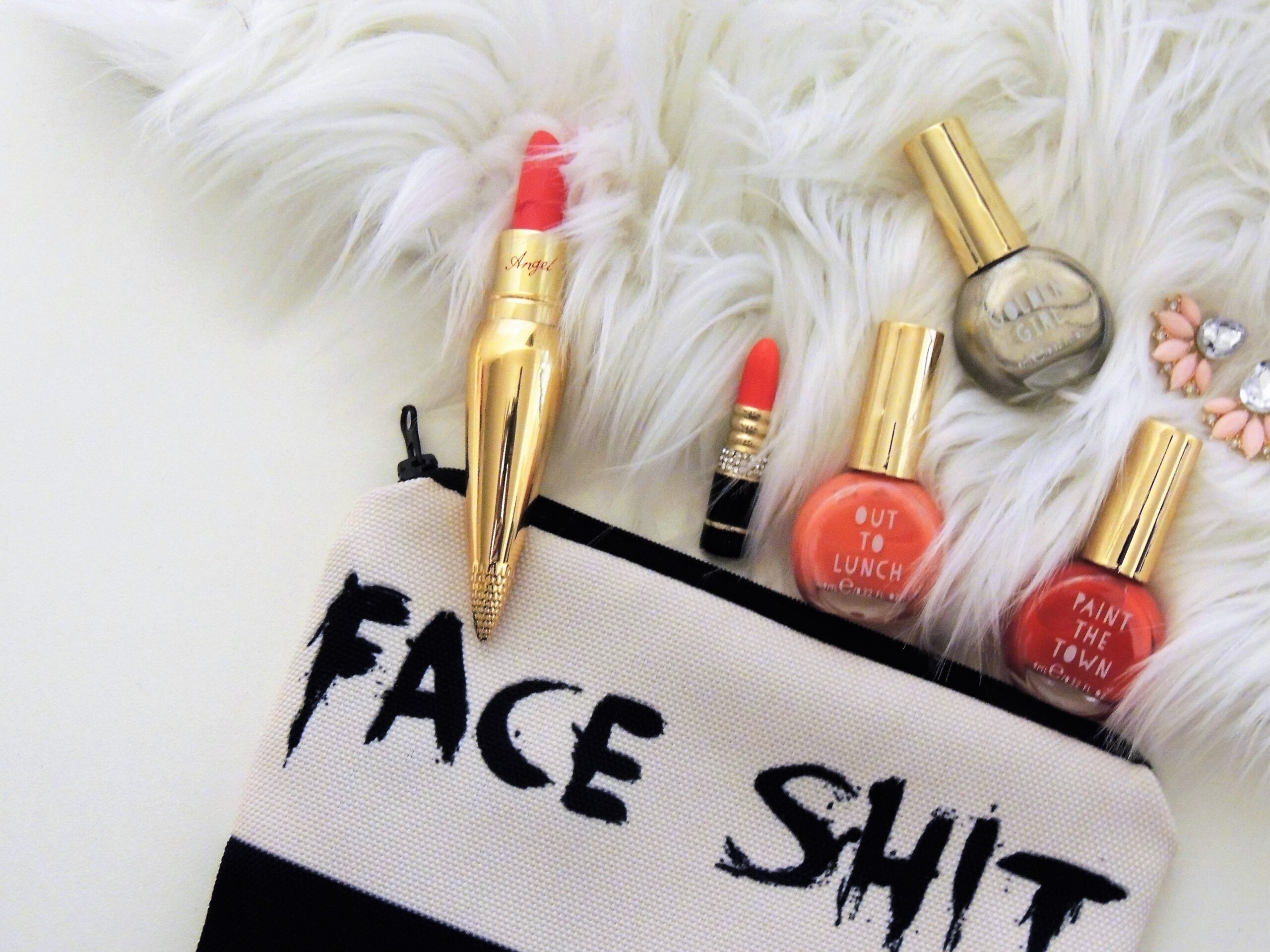The Truth About Toxic Ingredients in Cosmetics You Must Know
Beauty products promise miracles—radiant skin, a youthful appearance, and flawless hair. But the truth behind the glossy packaging and enticing advertisements isn’t always so glamorous. Since 2009, more than 73,000 cosmetic products have been found to contain at least 88 chemicals linked to cancer, hormone disruption, and other health risks. While many of these substances are banned in Europe, they are still widely used in the U.S. and other countries.
Shocking? Even more concerning is that some of these chemicals don’t even appear on ingredient labels—they are hidden under terms like “fragrance” or other undisclosed compounds that manufacturers aren’t required to reveal. Without clear regulations and strict oversight, consumers are left to fend for themselves—many unaware of what they are applying to their skin daily.
In this article, we’ll uncover the toxic ingredients in cosmetics that you should eliminate from your routine as soon as possible and how to identify safer alternatives.

12 Toxic Ingredients to Avoid in Cosmetics
1. 1,4-Dioxane
Did you know that your favorite shower gel may contain a toxic chemical that isn’t even listed on the label? 1,4-dioxane is a hidden guest in many cosmetic products—from shampoos and body washes to baby soaps and even toothpaste. Since it forms as a byproduct during manufacturing, companies are not required to list it on the packaging. This means you may be exposing yourself to this harmful substance daily without even realizing it.
Scientific studies have shown that 1,4-dioxane is potentially carcinogenic, with prolonged exposure increasing the risk of cancer. The Environmental Protection Agency (EPA) classifies it as a likely human carcinogen, and the European Union has strictly limited its use in cosmetics for safety reasons. Research has also indicated that 1,4-dioxane can penetrate the skin and negatively impact the liver, kidneys, and nervous system.
To minimize exposure, choose products labeled as free from ethoxylated compounds and avoid ingredients such as PEG (polyethylene glycol), laureth sulfates, and polysorbate, as they often contain traces of 1,4-dioxane.
Break Free From Fear of Judgment and Start Living Boldly
2. Acrylates
Have you ever wondered what you’re inhaling when you walk into a nail salon? That strong, distinctive smell isn’t just an unpleasant consequence of airborne chemicals—it’s often a warning sign that you’re surrounded by toxic substances. One of the most common culprits? Acrylates—a key component in artificial nails that provides strength and durability but comes with a dark side.
Research has shown that prolonged exposure to acrylate fumes can cause chronic respiratory issues, skin irritation, and allergic reactions. According to the American Academy of Dermatology (AAD), acrylates are among the most common causes of contact dermatitis, a painful skin reaction that leads to itching, redness, and peeling. Even more concerning, many nail technicians who have worked with acrylates for years report breathing difficulties, asthma, and even loss of sensation in their fingers due to constant exposure.
Acrylates are found in gel polishes, artificial nails, eyelash adhesives, and even some dental materials. To reduce your risk, opt for acrylate-free alternatives and ensure proper ventilation in nail salons. Sometimes, it’s worth asking—are perfect nails really worth the health risks?
3. Benzophenone
The sun—our greatest source of vitamin D, yet also the leading cause of premature skin aging. That’s why most people don’t leave home without sunscreen. But have you ever checked what’s actually in the sunscreen you apply? One hidden enemy in many sunscreens is benzophenone, a chemical used to absorb UV rays and prevent products from breaking down in sunlight. Ironic, isn’t it? We try to protect ourselves from sun damage, but in doing so, we might be applying harmful toxins directly to our skin.
Studies have shown that benzophenone mimics estrogen and can disrupt hormonal balance in the body. A 2020 study published in Environment International linked benzophenone exposure to reduced fertility in women and thyroid dysfunction. Even more alarming, certain forms of benzophenone have been classified as potential carcinogens.
Instant Tips to Improve Your Mood Naturally (No Money Needed)
Benzophenone isn’t just in sunscreens—it’s also found in lip balms, nail polishes, lotions, and even perfumes. To stay safe, choose sunscreens that contain zinc oxide or titanium dioxide, as they provide protection without hormone-disrupting chemicals.
4. Carbon Black
Mascara, eyeliner, lipstick—we all love that perfect black pigment that enhances our eyes and lips. But what if I told you that deep black color often comes from carbon black—tiny particles produced by burning fossil fuels? Yes, you read that right. Every time you apply makeup containing carbon black, you’re essentially using a byproduct of combustion.
Carbon black is classified as a potential carcinogen, as it can contain polycyclic aromatic hydrocarbons (PAHs)—chemicals linked to lung and skin cancer. A 2013 study published in Particle and Fibre Toxicology found that prolonged exposure to carbon black increases the risk of respiratory inflammation and DNA damage. Additionally, carbon black particles can be absorbed through the skin, meaning small amounts can enter the bloodstream.
It’s commonly found in mascaras, eyeliners, lipsticks, and eyeshadows. For a safer alternative, choose products labeled “carbon black-free” or use natural pigments such as activated charcoal or minerals.
5. Formaldehyde
When it comes to toxic ingredients to avoid in cosmetics, formaldehyde is one of the most notorious. It’s commonly found in nail polishes, hair-straightening treatments, shampoos, and even some makeup, where it serves as a preservative to prevent bacteria and mold growth. While it may seem like a beneficial addition, formaldehyde has a dark side—it is classified as a carcinogen that can cause serious health problems with prolonged exposure.
Studies have shown that inhaling or absorbing formaldehyde through the skin can lead to eye, nose, and throat irritation, and in severe cases, even respiratory damage and an increased risk of cancer. In some countries, products containing formaldehyde are already banned or heavily regulated.
To reduce your risk, check ingredient labels and avoid chemicals like DMDM hydantoin, imidazolidinyl urea, and quaternium-15, as they release formaldehyde in products over time.
6. Butyl Compounds
Butyl compounds, such as BHA (butylated hydroxyanisole) and BHT (butylated hydroxytoluene), are common preservatives used to extend the shelf life of creams, lotions, shampoos, and even some foods. At first glance, it seems beneficial to have products last longer, but research shows that these chemicals can seriously impact health. They are considered endocrine disruptors, meaning they can disrupt the hormonal balance in the body.
In 2019, the European Food Safety Authority warned of the potential carcinogenic effects of BHA and BHT, while some studies have shown that prolonged exposure may lead to fertility problems and liver and kidney dysfunction. To avoid these risks, opt for products with natural preservatives, such as vitamin E (tocopherol) or rosemary extract.
7. Ethanolamines
Ethanolamines, such as monoethanolamine (MEA), diethanolamine (DEA), and triethanolamine (TEA), are commonly used as foaming agents and pH regulators in shampoos, conditioners, lotions, shaving creams, soaps, and even hair dyes. While they may seem harmless, scientists warn that they can cause serious health issues. The European Commission reported that diethanolamine in cosmetics is potentially carcinogenic as it is linked to liver tumors.
Shyness Is Stealing Your Life—Take It Back with These Tips
Even worse, these toxic cosmetic ingredients can penetrate the skin and accumulate in the body, increasing the risk of health complications. A study published in the Journal of Toxicology showed that prolonged exposure to DEA can cause liver and kidney damage and affect male reproductive health. Another study found that exposure to DEA in pregnant women can cause irreversible effects on fetal brain development. To reduce the risk, check product labels and avoid ingredients containing “MEA,” “DEA,” or “TEA.”
8. Toxic Solvents in Nail Polish Removers
Have you ever wondered why some nail polish removers smell so strong? The culprits are chemicals like isopropyl acetone, methyl ethyl ketone, and N-methyl-2-pyrrolidone – strong solvents that help dissolve nail polish but also pose a risk to your health. These toxins are considered toxic ingredients to avoid in cosmetics as they can affect fertility, cause respiratory irritation, and even damage the nervous system.
A study by the U.S. Environmental Protection Agency (EPA) showed that N-methyl-2-pyrrolidone can cause developmental defects in fetuses in pregnant women. Frequent use of these ingredients is also linked to headaches, dizziness, and breathing problems. To protect your health, opt for nail polish removers free of these harmful chemicals. The best choice is products based on soy derivatives or ethyl lactate, which effectively remove polish without harming your body.
9. Talc
Talc is a popular ingredient in cosmetic products like baby powders, lotions, makeup, deodorants, and face masks. While it is a natural mineral, it is often contaminated with asbestos, which is a known carcinogen. In fact, some studies have shown that using talc contaminated with asbestos increases the risk of developing mesothelioma – a deadly cancer that affects the lungs and other internal organs.
11 Warning Signs of Burnout You Shouldn’t Ignore
In 2018, Reuters reported that several well-known cosmetic companies had to recall products due to the presence of asbestos in talc. This toxic cosmetic ingredient is especially risky when used in powder form, as the particles can be inhaled and reach the lungs. While some manufacturers claim their talc is safe, it’s better to choose alternatives like cornstarch or talc-free cosmetics.
10. Triclosan
Triclosan is a chemical commonly found in antibacterial soaps, toothpaste, shaving products, deodorants, and even some clothing and kitchen utensils. It was initially used for its antibacterial properties, but today we know that it is one of the most controversial toxic ingredients in cosmetics.
A study published in Environmental Health Perspectives showed that triclosan disrupts hormonal balance by affecting thyroid function and can mimic estrogen, increasing the risk of hormonal disturbances. Additionally, the U.S. Food and Drug Administration (FDA) banned triclosan in antibacterial soaps in 2016 because there was insufficient evidence that it was more effective than regular soap and water. Even worse, research suggests that prolonged use contributes to antibiotic resistance. To protect your health, opt for products without triclosan and wash your hands with regular soap and water – simple but effective.
11. Lead
Did you know that a dangerous heavy metal could be lurking in your favorite lipstick, mascara, or eyeliner? Lead, one of the most harmful elements, is often found in cosmetics – and without being listed as an ingredient! It can be found in eyeshadows, lip products, moisturizers, concealers, and even in some whitening toothpastes. While it is not directly ingested, it can accumulate in the body with constant use, leading to serious health consequences.
Prolonged exposure to lead is linked to neurological problems, brain damage, and behavioral disorders. Worse still, studies show it can affect hormonal balance and even cause fertility issues. A study by the U.S. FDA found that more than 400 types of lipstick contain traces of lead! For a safer alternative, opt for natural cosmetics and check for certifications regarding the absence of heavy metals.
12. PFAS
PFAS (Per- and Polyfluoroalkyl Substances) are extremely persistent chemicals that do not break down—neither in the environment nor in your body. They are used in waterproof cosmetics, long-lasting foundations, mascaras, and nail polishes. While this may seem great at first (no more smudged eyes in the rain!), there is a dark side. These toxic cosmetic ingredients are linked to cancer, hormonal disruptions, and even weakened immune systems.
A 2021 study conducted by the University of Notre Dame showed that 52% of the tested cosmetic products contained PFAS, with the highest concentrations found in long-lasting lipsticks and waterproof mascaras. Since these chemicals are difficult for the body to eliminate, they accumulate in the blood and organs, potentially leading to serious health problems over time. To reduce the risk, choose cosmetics free from PFAS, check for certifications, and be mindful of ingredients such as “PTFE” or “perfluoro-” in the list of ingredients.
A Documentary That Will Open Your Eyes About Cosmetics
If you really want to understand what lies behind the shiny packaging and promises of perfect skin, you need to watch the documentary Toxic Beauty (2019). This film reveals the shocking truth about the ingredients we apply to our skin every day—some of which are among the most toxic ingredients to avoid in cosmetics.
The film is based on three years of research and scientific studies that exposed the disturbing link between certain cosmetic ingredients and health problems. It also showcases real stories of women who developed serious illnesses due to the daily use of specific products. What is most surprising? Many ingredients that are banned in Europe are still allowed and widely used in the U.S.
If you’ve ever doubted whether you truly need safer, more natural cosmetics, Toxic Beauty will give you the answer. And remember—knowledge is power. Once you know what to watch out for, you can make better decisions for yourself and your health.









